The Keezhada excavations have unearthed a plethora of information about the ancient Tamil civilisation.
Keezhadi – Unearthing a civilisation
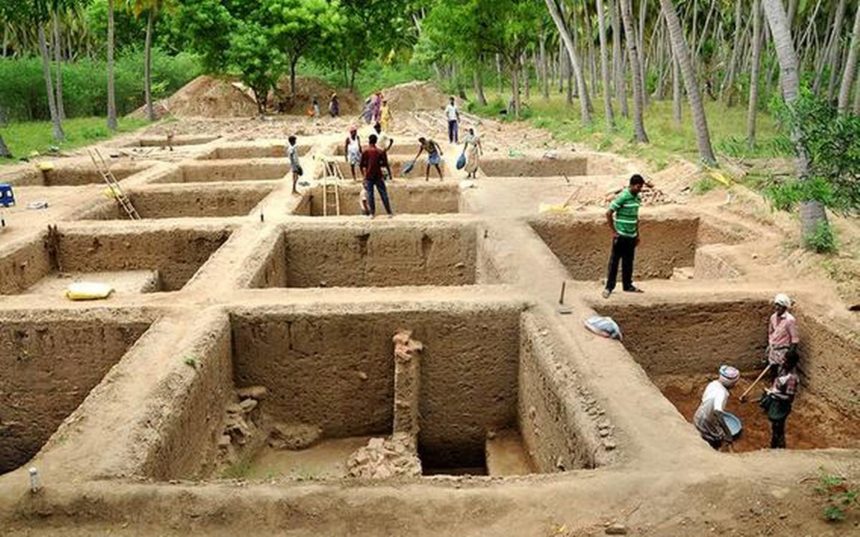
An ancient Tamil civilisation has been identified with the old Cholan, Cheran and Pandyan dynasties. For a very long time, there was no discernible place where any ruins were available to correspond with the advanced civilisation capable of a society described in the Sangam literature tentatively dated from 300 BCE. Some sporadic findings at Adichanallur and Kodumanal etc notwithstanding, there was no systematic effort to search for the ruins of this era. It is only recently that this lacuna has been addressed and systematic efforts have been launched to discover any such remains.
The ASI along with the State Archaeological department have conducted a survey and consistent with the worldwide trend of early civilisations based on river valleys, they have found archaeological remains in approximately 300 sites on the banks of the Vaigai river. These findings include urn burials, dolmens, megalithic circles, hero stones, potsherds, gold artefacts, Tamil-Brahmi script and more.
Excavations have been going on for some years and the village of Keezhadi along with nearby coconut groves and agricultural villages in the Madurai and Sivaganga districts have become beds for the revelation of archaeological and historic findings.
Keezhadi is the name of a village south-east of the ancient Temple town of Madurai in Tamil Nadu. Archaeological excavations at this place and the nearby areas have revealed the remains of ancient townships that date as far back as the 6th century BCE. Remains of pottery sherds, walls of homes, brick boundaries, cooking places, civic amenities, roof tiles, drainage systems, wells, gems, etc all point to the existence of a well-developed township in this area.
The findings in the Keezhadi clusters correspond with the third Sangam period which is now dated from the 6th Century BCE- 2nd Century CE. The Sangam periods of Tamil Nadu and nearby areas that include other parts of southern India and Srilanka are synonymous with classical writings, poetry and philosophy. The Pandyan kings of those times were known for their patronage towards convening gatherings of the learned and the composition and compilation of Tamil Literature. Madurai was the capital of the Pandya kingdom. The famous Jain poetic epic Silappatikaram is said to have been composed between 3rd-6thCen CE (Historians differ in the dating of this great work). The protagonists of this epic, Kannaki and Kovalan have been mentioned in the Sangam Literature such as Narrinal and Kovalam Katai. The epic gives a glimpse of the socio-economic development of the society.
These settlements must have been contemporary to the established Mahajanapadas of Northern India leading up to the age of Mauryas. In the South, these settlements became contemporary to the Pandya rulers and early Cholas. There was great religious and philosophical upheaval with the spread of new faiths such as Buddhism and Jainism from the North to the South and beyond. The Keezhadi settlement dwellers may have been aware of the happenings as there are a lot of locations around Madurai where Jain ascetics created stone beds in natural shelters on the hilltops. These have been dated as far back as 2500 years ago.
It must be remembered that Madurai is one of the oldest continuing townships in history. The Greek Ambassador, Megasthenese who was at the court of Chandragupta Maurya (4th Century BCE) wrote highly about the culture and wealth of the city. Pandyan Kings have sent emissaries to the Roman king Augustus. Kautilya or Chanakya, who was the advisor to Chandragupta Maurya has also mentioned Madurai in his book ‘Arthashastra’. Many other noted Greek writers and philosophers have mentioned Madurai in their works.
This area of Tamil Nadu had good trade relations with the Romans from ancient times. Export of gems, gold, silk, muslin was ancient. The Temple city of Madurai was a full-fledged township ruled by the Pandya kings. One must therefore understand that the historical writings corroborate the archaeological findings in areas near Madurai and the Vaigai river bank. This River is a major lifeline for South Tamil Nadu that originates on the hills of Theni district in the Western Ghats and touches the Bay of Bengal near Alagankulam, a port that is traced to the Sangam era. The river system must have assisted in the transport of goods to the ports on the East Coast.
A glimpse of some of the archaeological findings
I had been wanting to see the Keezhadi excavated sites (also referred to as the Keezhadi clusters) and had remained unsuccessful on two earlier attempts as the sites were covered up after every season of excavations. Sites are excavated in phases, areas marked and photographed, important artefacts collected, and then closed up. I got lucky the third time and saw the excavated area and witnessed the scientific methods of uncovering the remains from below the surface.
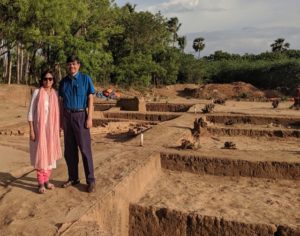
(August 2019)
The fact that strikes immediately on viewing the brick remains is that the baked bricks had a somewhat fixed dimension. This reveals that an organised brick making industry must have existed at an industrial scale and that random building materials were not used. The foundation of the area looks somewhat planned. Keezhadi findings (around 2500-year-old) show that the city must have had been well populated and a busy place with activities concerning agriculture, animal husbandry and industrial workshops for pottery, beadwork, textile etc.
The entire excavation site is partitioned into grids by the State Archaeological team so as to assist in pointing out the area of find of the artefacts and for dating of the finds. There are remains of a long wall that has continued into three adjacent grids. Another parallel wall that is thicker in the construct is also found. These walls have been dated to the 3rd century BCE.

(Remains of parallel walls)
One area in the building complex has a brick rectangular water storage tub. The water storage capacity is 2.5 feet by 4 feet with 2.5 feet height. It does not appear to be a bathing tub. It could have been used for dying cloth or some other industrial purpose. It appears to be in usable condition even today.
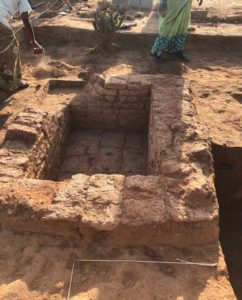
(The brick water storage tub)
At one end of the excavation site, we find a brick wall that has a curve. It displays a good sense of engineering and workmanship. This is said to be the oldest found remains in the area. It has been dated to approximately 580 BCE. It could have been used to channel the flow of water.
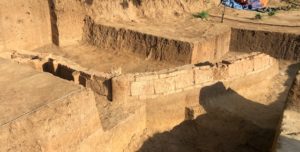
(The curved wall that helped in the flow of water)
During the earlier phases of excavation, a much bigger structure was excavated in the adjoining areas where extensive brick structure buildings have been found. There were remains of covered drains which point to the importance given to water and waste management.
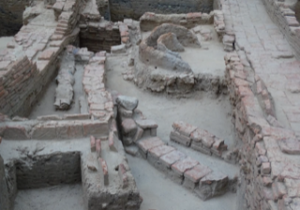
(Photo © ASI)
The site has yielded multiple examples of burial Urns. These Urns have smaller urns inside them along with other items. This is exactly similar to the site at Adichanallur, which is further south of Madurai area. The Adichanallur site and its associated sites are very near to the Tamraparni River. It looks like that there were advanced civilisation habitations along the river valley in antiquity even in the Tamraparni basin, which is the southernmost river in India of any appreciable length. One can deduct from these burial urns that the dead were cremated and remains stored in terracotta urns.

(A burial urn found in an earlier excavation phase. Photo © ASI)
An interesting find is that of a brick-lined container that has numerous stones in them. These special stones could have been used to extract silica. Silica was used as the raw material to make glass beads. Lab tests are pending.
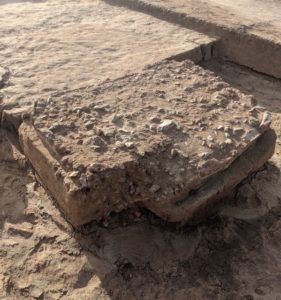
(A container with a variety of stones)
A very interesting find is an inverted terracotta ringed well. More such wells have been found in various other phases of excavations. These are different from dug wells with a brick lining. Terracotta broad mouthed rings are made and placed inverted one on top of the other to form a tall ringed well to store water. It is interesting to note that this ingenious design is used even till date in various parts of India, especially South India. Such wells must have ensured continuous water availability and the fact that one did not have to travel far to get water. Such wells helped in the conservation of water.
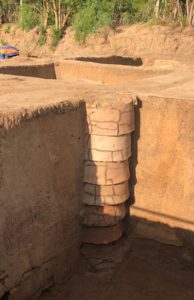
(Terracotta ringed well)
There is immense availability of pottery sherds in the excavated sites. An entire open area is made into a pottery sherd collection space. Here the archaeologists pile up pottery sherds that are from a specific grid/spot. This is when the gridding of the entire excavated area helps. This process helps them find out the type of pottery, the purpose and the date of the artefacts. Some utensils have been recreated by fixing the parts just like a jigsaw puzzle.
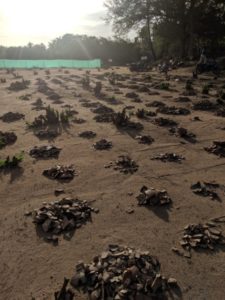
(Pottery yard)
The terracotta artefacts belong not just to pots and bricks but also to roof tiles. These remains are flatter and thicker. Some have finger lined marks on them. The ridges may have ensured that the tiles do not slip and stay in place.
Another way of recognising the roof tiles is that they have two holes on them. These holes were made so as to help fix one tile onto the other.
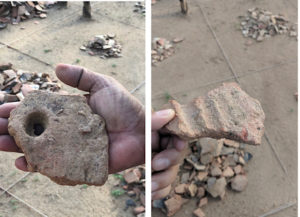
(Hole on a piece of broken roof tile; Remains of a roof tile that is ridged)
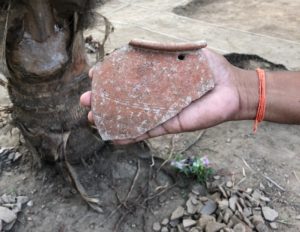
(Part of a terracotta pot with a hole)
A remarkable find is that of a terracotta piled drain system. Terracotta tubes have been placed one inside the other to form a long drain. These could have been regular drains for the exit of water waste from households. There have been findings of terracotta tubes connected to storage jars and furnaces. Some experts are of the opinion that such pipes could have been used for conducting chemical processes.
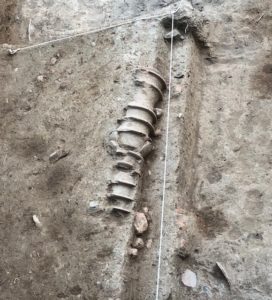
(Terracotta tube/drain)
Some Interesting Artefacts found in this phase
The earliest script found in the Indian subcontinent belongs to the 4500+-year-old Indus valley civilisation. This script has not yet been conclusively deciphered and it was probably lost in course of time. Keezhadi has yielded some graffiti-like marks on the Potsherds which are most probably a precursor to the later scripts.
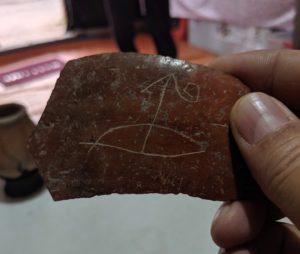
(One of the scratch marks or graffiti with similarities to Indus valley script)
Some of these markings are remarkably similar to the markings discovered in the Indus valley civilisation which was around 2000 years older than the dates of the artefacts in Keezhadi. Experts are still analysing these similarities and there is very little evidence found anywhere to bridge the information gap about what developments took place during this time period (end of Indus valley and the developed period around 600 BCE onwards). These graffiti markings are found in other megalithic and chalcolithic cultures also. It seems that these were a precursor to the Tamil Brahmi script which was used at Keezhadi during the Sangam Era.
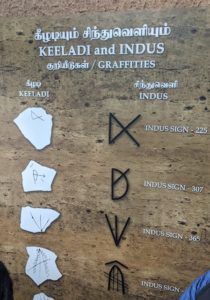
(Comparative scripts © State archaeology exhibition)
Apart from these markings, there are a lot of writings discovered in the Tamil Brahmi script. The presence of these samples takes back the start of written language to at least 600 BCE. These writings were made by scratching on the Pots after it was fired by the potters. Some of it refers to particular names.
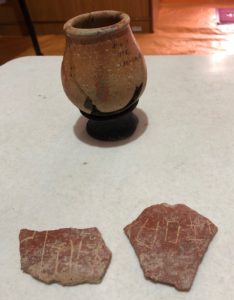
(A jar on a stand: Tamil Brahmi inscriptions on the Potsherds)
Two terracotta heads have become iconic finds of this site. A brown terracotta head with headgear and clearly marked features and a black terracotta head that has headgear/different hairdo and one ear that adorns a big earring. The other side of this face is damaged.
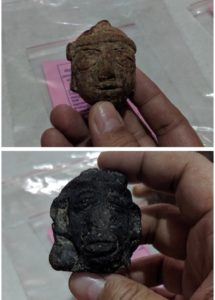
(Remarkable terracotta heads)
Black and red pottery ware have been the most prolific find of this location. The quality of these artefacts has to be seen to be believed. The shine is still retained in these remarkable pottery items which have black on the inner side and red on the outside. It was a technique called reverse firing where the flammable items were placed inside and when the whole set was fired, these materials carbonised to give this distinctive black colour on the inside. Application of modern technology on these items have now shown that carbon nanotubes were formed during this process and the presence of these nanotubes is the reason that even after the passage of thousands of years the sheen is retained.
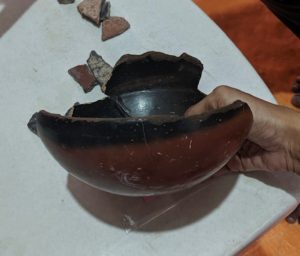
(Remains of black and red pottery)
Bead jewellery was a common item of export. Apart from glass and pearl beads, which may have been made with local items, there are beads and jewellery items made of other semi-precious stones like carnelian. This fact points to the trade links between North-West parts of India. This is not particularly surprising since the trade with Romans have been documented in detail, by the Romans at least, if not so much in detail on the Indian side.

(Beads of Glass, pearl and semi-precious stones)
The artistry during this period was of very high quality. There are a large number of sophisticated items found during the excavation here. Sharp ended bone items found, could have been used as instruments. Pieces of glass bangles have also been found. Some copper and iron implements have been recovered which shows the advancement in metalworking in this era.
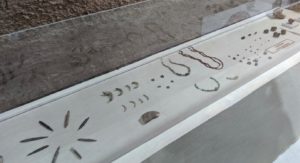
(© state archaeology exhibition. Bead jewellery, glass and bone artefacts)
More remarkable finds are of chess-like pieces which may have been used as playsets and hopscotch discs made of terracotta. Ivory game pieces and dice have also been found indicating the use of luxury items. Availability of such a wide variety of varied goods shows the developments in manufacturing techniques of this civilisation.
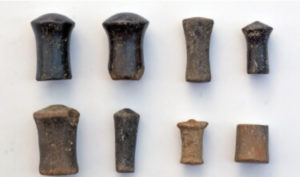
(Terracotta game pieces ©ASI)
Keezhadi findings have given a very positive direction in the field of archaeological discoveries in South India. The Tamil Nadu State Archaeology Department has done a wonderful task of unearthing sites and sharing facts about the findings.

Leave a Reply